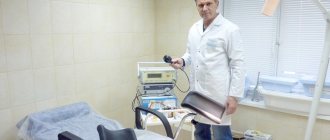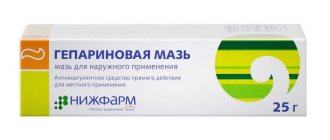Anal papillomas, also known as anogenital warts or genital warts, are benign growths in the anus (perianal area). Their appearance is associated with infection with the human papillomavirus (HPV). Infection occurs mainly through sexual contact. The development of clinical manifestations of the disease largely depends on the patient’s level of immunity. Treatment combines two main directions: destruction of formations and increasing the overall resistance of the body. A method of specific prevention of infection is vaccination.
Papillomas on the anus are often multiple in nature
Causes of anal papillomas
Warts near the anus appear as a result of a viral infection called HPV. There are more than a hundred types of the virus, forty of which provoke the growth of papillomatous formations of the anogenital tract in men and women. Based on their ability to trigger malignant tissue transformation, all types of the virus are combined into several groups.
| Oncogenic risk | Type of human papillomavirus |
| High | 16, 18, 31, 33, 35, 39, 50, 59, 64, 68, 70 |
| Average | 30, 35, 45, 52, 53, 56, 58 |
| Short | 6, 11, 42, 43, 44 |
Genital warts in most cases are the result of infection with viruses types 6 and 11.
How does the virus enter the body?
HPV is an anthroponotic pathogen, which means that its transmission occurs only from person to person. Papillomas of the perianal area and anal canal in adults are caused by certain strains of HPV that enter the body in several ways.
| Method of infection | Characteristic |
| Sexual | Main route of infection: The vast majority of cases of HPV infection and subsequent growth of genital warts are associated with sexual contact, including anal and oral-genital. With one sexual intercourse with a partner who has papillomavirus, infection occurs in 60% of cases. |
| Contact and household | The probability of infection is insignificant, but this route of infection is possible, since the virus can remain viable for a very short time in exfoliating skin cells and be transmitted from a sick person to a healthy person through towels, underwear, and care items. For this, microdamages to the skin and mucous membranes are sufficient. |
| Autoinfection | The virus can be spread from affected areas to new areas of skin, usually nearby, by the person himself when combing or removing hair during shaving and epilation. |
But papillomas in the genital and perineal area are found not only in adults; newborns can receive the virus from their mother during childbirth. The risk of infection is directly proportional to the severity of the infection in the woman in labor and the time of the anhydrous interval. Caesarean section does not reduce the risk of fetal infection, which indicates the possibility of intrauterine infection - transplacental transmission of the virus.
Manifestations of HPV infection in a newborn are not limited to the genital area; damage to the larynx is possible with the development of juvenile recurrent respiratory papillomatosis. Manifestations of the disease in most cases are recorded during the anal period - from one to three years.
Prevention of pathologies
Following doctors' recommendations for the prevention of hemorrhoids helps to avoid possible troubles in the future, so you should treat them with maximum attention and responsibility:
- the diet must include a sufficient amount of dietary fiber, a balanced drinking ration (40 ml of clean water per 1 kg of person’s weight);
- for optimal evacuation of feces from the intestines, excessive consumption of dairy products and flour products should not be allowed;
- it is necessary to exclude alcohol, overly hot or spicy foods;
- periodically it is necessary to include in the diet foods that can maintain normal intestinal microflora, mineral waters that balance water-salt metabolism;
- doctors advise practicing bowel hygiene: no long sitting on the toilet, a wet toilet in the anorectal area (ideally, washing with cool water after each bowel movement);
- motor activity should be normalized: for sedentary work - every hour, a 10-minute warm-up in the form of walking or light physical exercise, training the muscles of the perineum and abdominal muscles (tension-relaxation);
- you need to avoid the abuse of laxatives, which cannot eliminate the cause of constipation, but only temporarily remove the symptom - the provocateur of hemorrhoids;
- hard physical labor, lifting weights, strength training in the gym - taboo;
- non-standard intimacy through the rectum should be excluded;
- you should avoid wearing too tight underwear, clothes, or tight belts;
- every person is obliged to monitor their health: undiagnosed problems with the pancreas, thyroid gland, weight gain, untreated intestinal disorder are an extra chance of developing hemorrhoids, so annual medical examination should become the norm;
- During pregnancy, to prevent stagnation in the pelvis, expectant mothers need to perform a set of special exercises, walk a lot, walk a lot, and use a specially balanced diet in their diet.
Following the recommendations guarantees the absence of pathology even in varicose anal cavities and the formation of lumps in the anus and anorectal area.
Life cycle of papillomavirus
Once in the human body, the papillomavirus is located in predominantly immature, dividing epithelial cells, or rather, in its deepest layer - the basal layer. The existence of viral particles is possible in two variants.
| Intracellular form of HPV | Characteristic |
| Benign | Viral particles are in an inactive state and do not affect the chromosomal apparatus of the infected epithelial cell. There are no clinical symptoms. This form of HPV parasitism is called episomal. |
| Malignant | Viral particles are in an active state and are integrated into the genome of the epithelial cell. The result of this process is the synthesis of HPV-encoded proteins. Clinical manifestations of the disease occur. This form of parasitism, called introsomal, is considered malignant not because of the obligatory growth of malignant tumors, but because of the activity of the virus. Activation of HPV leads to two types of effects on the epithelium: productive and transforming. With the first, benign warts are formed, with the second – dysplasia of varying severity, the lack of adequate and timely treatment of which leads to the development of cancerous tumors. |
How the papillomavirus behaves inside the body is largely determined by the state of general resistance.
Provoking factors
The strength of immunity depends on many conditions. The decrease in the patient’s body’s defenses is facilitated by:
- prolonged exposure to low temperatures;
- injuries of various types;
- psycho-emotional stress;
- hard physical labor;
- bad habits (alcoholism, smoking);
- infections of viral, bacterial, fungal etiology;
- pregnancy and lactation;
- malignant tumor processes;
- endocrine diseases;
- use of certain medications (hormones, antibiotics, cytostatic drugs).
The likelihood of infection is additionally influenced by a number of provoking factors.
| Factor | Description |
| Young age | The appearance of papillomas on the anus is most often recorded in patients from 16 to 33-34 years old. The peak incidence occurs in the age period from 20 to 24-25 years. |
| Sexual debut at an early age | Early initiation of sexual relations negatively affects the possibility of infection. This is explained by the body’s vulnerability to HPV in conditions of unfinished hormonal changes. |
| Promiscuous sexual relations | The presence of several sexual partners and their frequent change increase the risk of anal papillomas in representatives of both sexes. |
| Neglect of barrier contraception | Barrier contraceptive - a condom is currently the only readily available and relatively inexpensive means of possible protection against papillomavirus. Why only possible and not guaranteed? Because a condom is not able to isolate all contacting areas of damaged skin. But unprotected sexual intercourse is a very high risk of infection. Anal sex without a condom further increases the likelihood of HPV infection, as it is often accompanied by microtrauma to the rectal mucosa and skin near the anus. |
There may be several predisposing factors that facilitate the penetration of HPV into epithelial cells.
What to do if a lump near the anus bursts and bleeds
Rupture of cones in the anus is a consequence of another exacerbation of advanced hemorrhoids with thrombosis of hemorrhoids. A burst varicose vein is an open bleeding wound with a constant threat of secondary infection or the development of serious anemia, especially in the elderly. The bleeding needs to be stopped. Before visiting a doctor you must:
- use ice from the refrigerator as a compress on the problem area for 10-15 minutes;
- disinfect the lump in the anus with hydrogen peroxide (you can make a sitz bath with a cool, pink solution of potassium permanganate);
- lubricate the hemorrhoid with Vishnevsky ointment;
- A tablet of Ketorol, Ibuprofen, Nurofen will help relieve pain;
- To relieve inflammation, you can use suppositories with propolis or adrenaline; sea buckthorn suppositories promote healing.
On the day the lump ruptures near the anus, bed rest is required, physical labor is limited, and heavy lifting is prohibited. The doctor will select an individual treatment regimen for each person.
Symptoms of anal papillomas
Papillomatous neoplasms in the anal area can be single, but much more often – multiple. Their sizes are quite variable: from a few millimeters to 1 or more centimeters. The base of papillomas is usually narrowed in the form of a stalk, and the structure is lobular. In the photo, the shape and color are also varied, they can be in the form of:
- small flesh-colored or pink nodules;
- finger-like protrusions of various shades of brown;
- growths resembling cauliflower inflorescences or the comb of a rooster.
The course of the disease is often asymptomatic. Patients with uncomplicated papillomas, especially small ones, do not show any complaints. Maceration (wet softening, loosening), bleeding, erosion, ulceration are detected when they are traumatized and lack of proper hygienic care for the skin of the perianal area.
The addition of a secondary bacterial infection causes an unpleasant odor, increased pain, and itching. Discomfort and pain during defecation are possible if the formations reach a significant size, are localized close to the anus, or affect the mucous membrane of the rectum.
Signs and symptoms of the disease
Small anal tumors usually occur without showing any symptoms. As papillomas grow, the first signs of physical discomfort appear, manifested in the following symptoms:
- blood discharge in stool;
- painful sensations during the act of defecation, since at this time multiple injuries to pathological formations occur;
- severe itching in the anus;
- constant feeling of wetness in the anus;
- a sharp and unpleasant odor caused by wet spots that form on underwear during the acute stage of condylomatosis;
- blood discharge on underwear, as a result of friction of growths on panties and subsequent injury to them;
- sensations of a foreign body in the anus;
- pain when walking or sitting.
Usually, with frequent trauma to growths, an infection enters the affected area, which causes inflammatory processes and the formation of purulent discharge.
Neoplasms cause severe pain, swelling and redness of the skin. Often, the patient develops a high temperature and their general health deteriorates significantly.
Sometimes such growths appear directly in the rectum itself. In such cases, in addition to the above symptoms, there is a feeling of a foreign body appearing inside the intestine.
Diagnosis of anal papillomas
When papillomas appear on the anus, women usually turn to a gynecologist or dermatologist, men - to a dermatologist or proctologist. Doctor for diagnosis:
- interviews the patient;
- finds out the history of the appearance of formations;
- carries out a visual inspection of the perianal area;
- performs digital examination of the anal canal and rectum;
- conducts dermatoscopy - studying formations using an optical device called a dermatoscope.
Warts on the anus are often combined with genital warts of other locations and infections that are sexually transmitted, so specialists often prescribe additional examinations:
- gynecological examination;
- cytological smear - study of the structure of epithelial cells of the vaginal part of the cervix and cervical canal under a microscope;
- colposcopy - examination of the vagina and cervix with an optical device called a colposcope;
- urethroscopy – assessment of the condition of the urethra using a urethrocystoscope;
- examination for urogenital infections using polymerase chain reaction.
It is necessary to examine not only the patient, but also his sexual partner.
In order to determine the infectious agent, they resort to the PCR method
Treatment of anal papillomas
Therapeutic measures for HPV lesions in the perianal area are designed to solve the following problems:
- destroy papillomatous foci;
- stimulate an antiviral immune response;
- prevent relapse of the disease.
To date, there is no method that can be guaranteed to get rid of papillomavirus; this is hampered by its species diversity. Therapy is considered successful if it is possible to put the virus into a dormant state. The sexual partner must also be treated.
| Medical direction | Events |
| Removal of existing papillomatous lesions | Destruction of warts in the anal area can be carried out by surgical or electrosurgical methods, using cryo- and laser therapy, cauterization with chemicals (Solcoderm, trichloroacetic acid), using cytotoxic drugs (Podophyllin, Condilin, 5-fluorouracil). The choice of method is determined by the number, size, location, morphological features of papillomas, as well as the wishes of the patient and the experience of the attending physician. |
| Immune stimulation | Immunostimulating and antiviral agents that can increase the effectiveness of the systemic and local immune response are prescribed in various dosage forms, including: tablets, injection solutions, rectal and vaginal suppositories, gels, creams, ointments, sprays. The list of drugs is extensive: Cycloferon, Interferon, Isoprinosine, Groprinosine, Allokin-alpha, Viferon, Genferon, Epigen intimate, Aldara, Lykopid, Immunomax, etc. |
| Relapse Prevention | It is necessary to lead a healthy lifestyle, choose one sexual partner, limit casual sex, and use barrier methods of contraception. For primary prevention, vaccines that are effective against HPV should be used, preferably before sexual activity. |
There are many traditional methods that help get rid of warts at home. The recipes use garlic, lemon juice, celandine, and hydrogen peroxide. But it should be borne in mind that all of them are either not effective enough or are associated with a high risk of tissue injury. It is important to remember that treatment must be comprehensive and will not be effective without systemic therapy.
Removal of anal warts
Which doctor removes condylomas in the anus? Women and girls can go to our clinic to see a gynecologist, girls and teenagers under 16 years old should go to a pediatric gynecologist, and young people are sent to a dermatovenereologist or urologist (but this is a different medical center - we don’t accept such specialists). If you feel something “extra” near the anus, then consult a doctor promptly!
The therapeutic approach to this problem is well known and standardized. The choice of method and volume of exposure is determined by the totality of data from a specific woman or man, namely the following:
- localization of formations (external or internal),
- their number (single or multiple),
- episodicity (primary lesions or relapse),
- analysis data of instrumental tests.
Removal of anal condylomas is mandatory, regardless of their location and number. Of course, removing papillomatous lesions inside the anal canal or on the walls of the rectum is much more difficult than cauterizing them around the anus. Based on the specifics and information on points No. 1-4, the optimal method is selected and the cost of the procedure is determined. As a rule, modern proctology and gynecology gives preference to the radio wave method, which allows you to get rid of these warts quickly and bloodlessly. And modern local anesthesia will make this process minimally uncomfortable. See “Prices for genital wart removal.”
The presence of formations of significant size, and especially condyloma in the rectum in the middle and upper third, may require surgical treatment in a hospital setting.
Trying to get rid of anal growths at home, inserting suppositories, applying ointments and creams, wanting the condylomas in the rectum to go away on their own, is a futile task, and in some cases, extremely harmful. Some substances from such traditional medicine can cause burns to the mucous membrane, provoke more active growth of papillomas and their degeneration.
Forecasts
Anal warts, if treated and removed, are not life-threatening and in most cases do not turn into cancer. However, HPV can linger in the body, causing repeated episodes of growth inside the rectum or around the anus. To monitor for a possible relapse and take the necessary measures in time, schedule your next appointments with your doctor in advance. This is especially true in the first three months after the end of treatment.
Prevention measures
While there is no surefire way to prevent contracting HPV and anal warts, as they say, an ounce of prevention is worth a pound of cure. There are some measures you can take on your own to help reduce the likelihood of infection developing and reoccurring:
- Using a condom can significantly reduce the risk factors for the appearance of condylomas on the anus.
- Abstain from polygamy or limit the number of partners with whom you have sexual contact.
- Get vaccinated with Gardasil (relevant for girls, women under 35 years of age and men).
- If you already have a papilloma on your anus, do not touch or scratch it, as it may spread to other areas.
- When using a shared shower, pool or locker room, such as at a gym, always wear sandals or flip-flops to avoid contact with areas where people infected with human papillomaviruses may have been present.
- Individual items of clothing, towels, and sheets that come into contact with your or someone else's wart. Contact of these household items with genital papilloma and then use of them in different parts of the body, such as the anus or vulva, can lead to infection or household contact spread of the infection.
- If your boyfriend or girlfriend (for lesbian couples) has papillomas or condylomas in their intimate areas, anal play will most likely contribute to the transmission of the disease. Use barrier contraception and get rid of these formations quickly!










